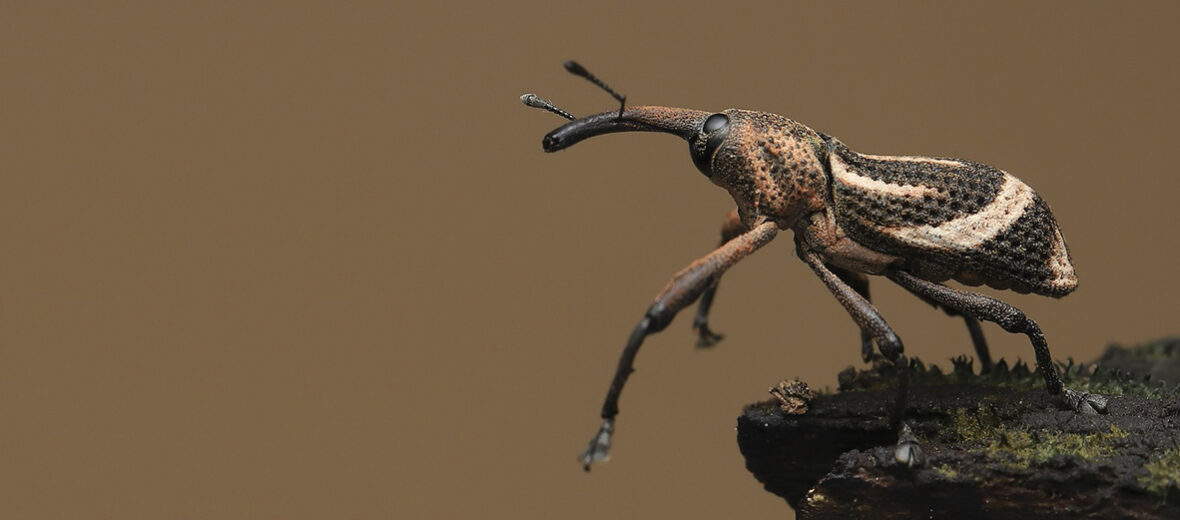
The weevil can be found on every continent sans Antarctica. The majority of weevils are considered pests as they can destroy crops. Weevils are listed anywhere from Data Deficient to Critically Endangered by the IUCN. These insects tolerate a wide range of habitats, based on the species, from deserts to forests to jungles, and everything in between. Most weevils are characterized as having an elongated rostrum (snout).
First the Stats…
Scientific name: Curculionoidea
Weight: Up to 2.5 ounces
Length: Up to 3.5+ inches
Lifespan: Up to 2+ years
Now on to the Facts!
1.) There have been approximately 97,000 species of these critters identified to date.
2.) Most weevils are widely considered pests due to the extensive damage they can cause to crops. The wheat or grain weevils destroy stored grain. The maize weevils attack corn. The boll weevils go after cotton; and so on.
3.) At the end of their rostrum are chewing mouthparts used for feasting on their preferred food.
4.) While most have the ability to fly, some lack said ability, such as the case with the Otiorhynchus genus.
5.) There is 1 species, Austroplatypus incompertus, that exhibits eusociality (cooperative brood care).
But wait, there’s more on the weevil!
6.) They are typically divided into 2 main divisions, the Orthoceri or primitive weevils, and the Gonatoceri or true weevils. A 3rd division has also been proposed, Heteromorphi.
7.) Primitive weevils tend to have long scapes and geniculate antennae, while the true weevils typically have short scapes with little or no “elbow.”
Did you know…?
Some weevils are utilized to control invasive plants.
8.) Some weevils have evolved amazing camouflage abilities. They can resemble twigs, leaves, and even thorns, making them nearly invisible to predators.
9.) Bean weevils drill tiny holes into seeds and pods and lay their eggs inside. This ensures a safe place for the larvae to develop.
10.) There are some weevils that are beneficial in that they break down decaying plant matter, which aids in soil enrichment.
But wait, there’s still more on the weevil!
11.) Weevils are strong and can lift many times their own weight.
12.) These critters have been a part of folklore and mythology for centuries. Some cultures view them as symbols of prosperity or good luck, while others associate them with famine and destruction.
Did you know…?
It has been proven that many insects possess far more protein and less fat than traditional meat or plants.
13.) In some locales, weevils are considered a delicacy. They’re fried, roasted, and even eaten raw, and are said to be a great source of protein and nutrients.
14.) They have also been to outer space. Weevils have been brought aboard the international space station to test the effects of microgravity on living organisms.
15.) Some weevils can lay up to 400 eggs in their lifetime, but the amount of eggs laid is based on the species.
Now a Short Weevil Video!
Be sure to share & comment below! Also, check out the Critter Science YouTube channel. Videos added regularly!
Want to suggest a critter for me to write about? Let me know here.
Some source material acquired from: Wikipedia & IUCN



